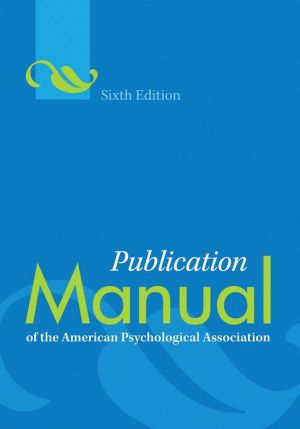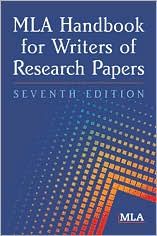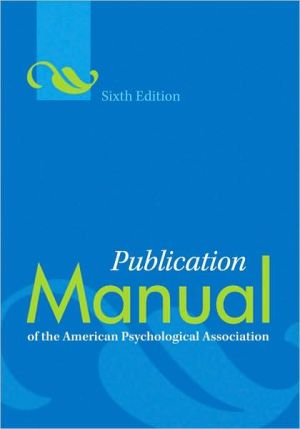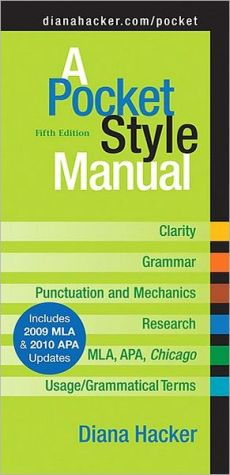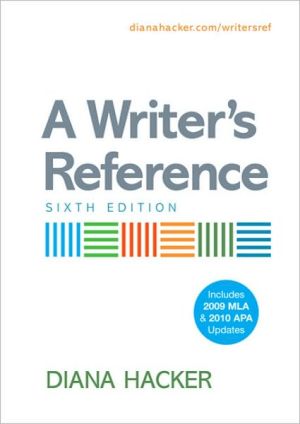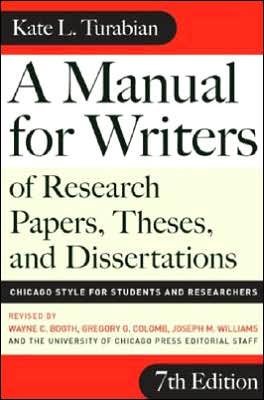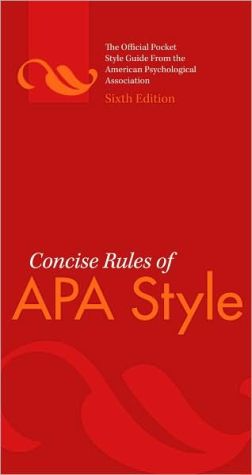Bookmarks: A Guide to Research and Writing
Bookmarks is a new-generation research guide built on the assumption that students need to appreciate both conventional methods of research and techniques associated with rapidly developing electronic technologies.. "Bookmarks is designed as a bridge between old and new traditions - a guide for the college writers working in both print and electronic environments. It invites them to think of themselves, perhaps for the first time, as serious researchers.
Search in google:
Bookmarks is a new-generation research guide built on the assumption that students need to appreciate both conventional methods of research and techniques associated with rapidly developing electronic technologies.. "Bookmarks is designed as a bridge between old and new traditions - a guide for the college writers working in both print and electronic environments. It invites them to think of themselves, perhaps for the first time, as serious researchers.
PREFACE: Preface What's a bookmark? A decade ago, the answer would have been simple—a strip of metal, fabric, or paper inserted between the pages of a book to hold a reader's place. But, today, a bookmark can also be understood as a feature in a Web browser, a way to store Web addresses one expects to consult often. Someone familiar with the World Wide Web might even use the term as a verb: to bookmark. What has happened to this simple word provides a rationale for Bookmarks: A Guide to Research and Writing. Just as electronic technology has complicated the meaning of bookmark, it has similarly transformed every aspect of research for college writers and instructors. So we offer Bookmarks as a new generation research handbook, one built on the assumption that students need to know how electronic sources, materials, and methods are altering their relationship to knowledge. And yet we insist that not everything has changed. Bookmarks still do hold readers' places, and research still does often involve familiar activities such as finding topics, browsing indexes, summarizing and paraphrasing sources, and organizing ten-page papers. For this reason, we have carefully designed Bookmarks as a bridge between old and new traditions—a guide for researchers who expect to work regularly in both print and electronic environments. It will be obvious that Bookmarks has been written with the presence of technology assumed. Throughout the volume, for example, we refer to research "projects," not papers, and we treat Web pages, brochures, and multimedia presentations as plausibleoptions for reporting research findings in many situations. We take technology seriously because it creates new opportunities for undergraduates to do serious research in both their local and professional communities. At both the University of Texas at Austin and the University of South Florida, we have watched students using the Web and other technologies grow as writers and researchers, and we have been excited by their achievements. We've also been chastened, occasionally, by Web projects that were more glitter than substance—offered by writers who have failed to read, organize, document, or edit carefully. While much of Bookmarks is genuinely new, the framework for describing research processes and the detailed chapters on documentation draw on materials refined over more than a decade. The result, we are confident, is a research guide that offers writers state-of-the-art advice about college research: the best of an older tradition merged with a thoughtful assessment of the new. Our focus in this book is on offering comprehensive, practical advice for student researchers, including: An opening section encouraging students to think of themselves as researchers (Section 1a). More than twenty manageable chapters explain the process of research. Specific advice for sizing up research projects and assignments (Section 1b). In particular, writers learn how to read and interpret assignments. A full chapter on project management (Chapter 2), offering suggestions for setting up calendars and timelines. There is fresh advice, too, for working on collaborative projects. A chapter on field research (Chapter 8). Not all research occurs in the library or online, so Bookmarks includes suggestions for conducting interviews, using questionnaires, and making systematic observations. A complete chapter on handling quotations (Chapter 20), offering guidelines for selecting and using quotations. Bookmarks pays unusual attention to rhetorical matters, offering: A full chapter on finding a topic (Chapter 3) as well as a chapter that helps writers to focus and narrow their theses (Chapter 5). A stasis approach to establishing the purpose of a research project (Chapter 4). Stasis questions also steer the development of thesis sentences and other aspects of the research process. A chapter on drafting the project (Chapter 18) that helps researchers develop cogent arguments for a particular audience. Bookmarks emphasizes the process of evaluating and working with sources, research skills especially critical for success today. We include: A full chapter on evaluating sources (Chapter 11). The chapter includes a chart that explains the differences between research materials. A thorough discussion of intellectual property issues (Chapter 15). The chapter also provides guidelines for using academic sources responsibly. A full chapter on keyword searches (Chapter 7). The chapter helps writers manage electronic indexes and search engines efficiently. A chapter on positioning sources (Chapter 12). Writers learn how to detect and assess the biases in the materials they are using. A full chapter on summarizing and paraphrasing (Chapter 14). A key feature of Bookmarks is its extraordinarily comprehensive coverage of documentation formats, including Columbia Online Style (COS). This new system of documentation for electronic sources is presented authoritatively by its creator (Chapter 22). In addition, Bookmarks includes detailed treatment of MLA, APA, CMS, and CBE documentation styles (Chapters 23-26)—with comprehensive indexes to documentation items and clear examples of citations as they should appear both in the body of a paper and in the list of Works Cited or References. And Bookmarks includes complete sample papers in MLA, APA, and CMS styles, as well as excerpts from papers illustrating COS and CBE styles. Handy checklists help writers set up important items in research papers including title pages, works cited sheets, and abstracts. Bookmarks itself exemplifies the way technology is reshaping the writing process. The book features a strong visual component, with a photo essay telling the story of research throughout the ages. It begins inside the front cover and continues on each tabbed divider. Screen shots of useful Web sites appear on the reverse of all tabbed dividers. These sites comprise a useful feature entitled "Bookmarks: Web Sites Worth Knowing" which guides researchers to reliable and intriguing sources online. Additional photographs and diagrams throughout the volume illustrate the research process. A full-color, illustrated guide to creating Web pages (p. 185) offers succinct, practical advice for creating and evaluating Web projects. Two complete sets of exercises follow each of Chapters 1-21. The first set introduces writers to specific research skills ("Getting Involved") and the second leads them step-by-step through their own academic work ("Managing Your Project"). Tabbed dividersthroughout Bookmarks enhance access to frequently consulted topics, and a glossary of terms inside the back cover provides easy reference for new or unfamiliar terminology.
PrefaceTo the WriterPt. IBeginning Research11Sizing Up Your Research Project22Managing Your Project93Finding a Topic194Establishing a Purpose275Narrowing Your Topic35Pt. IIGathering Ideas and Information436Finding Information447Doing Keyword Searches658Conducting Field Research739Keeping Track of Information81Pt. IIIWorking with Sources8710Choosing Appropriate Sources8811Evaluating Sources9712Reviewing and Positioning Sources10213Annotating Research Materials10814Summarizing and Paraphrasing Sources11215Understanding Academic Responsibility and Intellectual Property123Pt. IVDeveloping the Project13316Refining Your Claim13417Organizing Your Project13918Drafting Your Project15019Documenting Your Project15620Handling Quotations16321Completing Your Project173Authoring Your Own Web Site185Pt. VDocumentation20122COS Documentation20523MLA Documentation23524APA Documentation27525CMS Documentation30726CBE Documentation327Credits333Index335Glossary354

